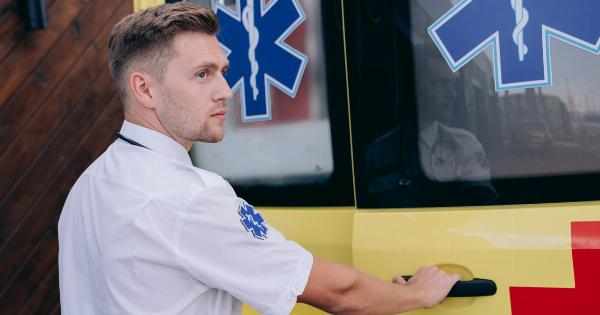Fractures, also known as broken bones, can occur due to various reasons such as accidents, falls, sports injuries, or underlying medical conditions. Identifying fractures is crucial for timely medical intervention and effective treatment.
This guide is designed to help beginners understand how to identify fractures and provide some basic knowledge about different types of fractures.
Understanding Fractures
Before delving into the process of identifying fractures, it is important to have a basic understanding of what exactly a fracture is. A fracture is a break in the continuity of a bone, ranging from small cracks to complete breaks.
Fractures can occur in any bone in the body and can vary in severity and location.
Common Signs and Symptoms
Identifying a fracture can be challenging, especially for beginners. However, there are certain signs and symptoms that can indicate the possibility of a fracture. If you experience any of the following, it is important to seek medical attention:.
1. Pain
Pain is one of the most common symptoms of a fracture. The intensity of the pain may vary depending on the severity and location of the fracture. In some cases, the pain may be sharp and intense, while in others, it may be a dull ache.
2. Swelling
Swelling around the affected area is another common symptom of a fracture. The swelling may be accompanied by bruising or discoloration.
3. Deformity
A visible deformity or abnormality in the shape or alignment of the bone is a clear indication of a fracture. The affected area may look misshapen, angulated, or out of place.
4. Tenderness
Tenderness or sensitivity to touch is often present in the area surrounding a fracture. Applying pressure or touching the area may elicit pain.
5. Inability to Move
If you experience difficulty or inability to move the affected area, it may indicate a fracture. Fractures can restrict joint mobility and make it challenging to perform normal movements.
6. Abnormal Sounds or Sensations
If you hear a cracking sound or feel a grinding sensation during an injury, it could suggest a fracture. Although this symptom may not always be present, it is worth noting.
Types of Fractures
Fractures can be classified into different types based on various factors, including the cause, location, and pattern of the break. Here are some common types of fractures:.
1. Closed Fracture
A closed fracture, also known as a simple fracture, is a fracture where the broken bone does not puncture the skin. The fracture is contained within the body, typically causing pain, swelling, and bruising.
2. Open Fracture
An open fracture, also referred to as a compound fracture, occurs when the broken bone penetrates through the skin. This type of fracture is more severe and poses a higher risk of infection.
3. Greenstick Fracture
A greenstick fracture is a type of fracture commonly seen in children. In this type of fracture, the bone cracks but does not completely break, similar to a green twig bending but not breaking.
4. Comminuted Fracture
In a comminuted fracture, the bone breaks into multiple fragments or splinters. This type of fracture is often the result of high-impact injuries.
5. Stress Fracture
A stress fracture is a hairline crack in the bone caused by repetitive stress or overuse. This type of fracture is common in athletes and individuals engaged in activities that put repetitive stress on specific bones.
First Aid for Fractures
If you suspect someone has a fracture, it is essential to provide appropriate first aid before seeking medical attention. Here are some general first aid measures for fractures:.
1. Immobilize the Area
Immobilize the affected area using a splint or support, if possible. This helps prevent further damage and reduces pain.
2. Apply Ice
Apply a cold compress or ice pack wrapped in a cloth to the injured area. This can help reduce swelling and alleviate pain.
3. Elevate the Injured Limb
If the fracture affects an arm or leg, elevate the limb to reduce swelling. Ensure the limb is supported comfortably.
4. Seek Medical Attention
It is crucial to seek medical attention as soon as possible after providing initial first aid. A healthcare professional will be able to assess the fracture accurately and provide appropriate treatment.
Diagnosis and Treatment
To accurately diagnose a fracture, a healthcare professional may perform various imaging tests, such as X-rays, CT scans, or MRI scans. These tests help determine the location, severity, and type of fracture.
Treatment for fractures may vary depending on factors such as the type of fracture, location, and the patient’s overall health. Common treatment options for fractures include:.
1. Immobilization
Immobilization involves the use of casts, braces, or splints to hold the broken bone in place while it heals. This allows the bone to align correctly and promotes healing.
2. Medications
Pain medications, such as over-the-counter pain relievers or prescription drugs, may be recommended to manage pain and inflammation associated with fractures.
3. Surgery
In some cases, fractures require surgical intervention. Surgery may involve realigning the broken bone fragments, inserting metal plates, screws, or rods to stabilize the bone, or performing other necessary procedures to ensure proper healing.
4. Rehabilitation
After the initial healing process, rehabilitation exercises and physical therapy may be prescribed to restore joint mobility, strengthen muscles, and regain functional abilities.
Preventing Fractures
While it is not always possible to prevent fractures, there are measures that can reduce the risk of experiencing a fracture:.
1. Maintain Bone Health
Eat a balanced diet rich in calcium and vitamin D to promote strong bones. Engage in weight-bearing exercises regularly and avoid smoking, excessive alcohol consumption, and excessive caffeine intake, as these factors can weaken bones.
2. Safety Measures
Take appropriate safety measures to prevent accidents and falls. Use proper protective gear when engaging in sports or other physical activities.
3. Modify the Environment
Make necessary modifications to the environment, especially for individuals at higher risk of falls and accidents. Install handrails, ensure proper lighting, and remove hazards that can cause tripping or falling.
Conclusion
Identifying fractures can be challenging, but by recognizing common signs and symptoms, it is possible to take prompt action and seek medical attention.
Understanding different types of fractures and providing initial first aid can also contribute to better outcomes. Remember, if you suspect a fracture, it is essential to consult a healthcare professional for an accurate diagnosis and appropriate treatment.






























